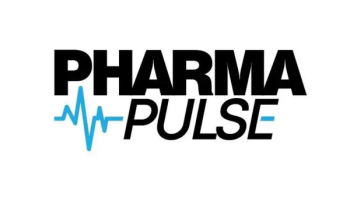
Pharma Industry Shifts Toward Full Activation
In the fourth part of her Pharma Commerce video interview, Heather Zenk, Cencora’s president of US supply chain, explores how public-private collaboration, smarter sourcing strategies, and long-term manufacturer support are helping to fortify pharmaceutical supply chains against future crises.
In a video interview with Pharma Commerce, Heather Zenk, Cencora’s president of US supply chain, describes how today's distribution networks must seamlessly connect manufacturers to care sites that range from large academic centers to rural pharmacies and physician offices. This “last mile” delivery is essential because, as Zenk notes, “all healthcare is local.” Patients want access to advanced therapies close to home, and distributors play a critical role in making that happen.
A major focus in this effort is maintaining product integrity, especially for cold chain items that must be stored between 2–8°C. Innovations in cold chain management now go beyond temperature tracking; they include predictive maintenance of infrastructure such as freezers and compressors. Distributors not only monitor product temperature but also evaluate the performance and potential failure risks of the equipment that manages the cold chain environment.
Zenk emphasizes the importance of marrying manufacturer data with real-time logistics. For example, if a care site accidentally stores a cold chain product outside the optimal range for a short period, data from the manufacturer can often confirm whether the product remains viable. This responsiveness supports safe patient care and reduces waste.
Another important innovation is the use of reusable cold chain totes, which service over 90% of the US market. These require robust freezing systems and operational oversight to ensure readiness and reliability. Zenk underscores that preventing failure, rather than simply reacting to it, is the next frontier in pharmaceutical distribution. By using data-driven insights and predictive engineering, the distribution process becomes more resilient, ensuring that patients can access vital therapies without delay or compromise.
She also comments on the advanced technologies that are proving most effective in enhancing real-time visibility and operational efficiency; strategies organizations should prioritize to ensure compliance while minimizing disruptions for manufacturers and providers as the DSCSA compliance date approaches; lessons learned from recent drug shortages and global disruptions; the practical steps that can be taken in transportation, packaging, and warehousing to meet sustainability goals without compromising reliability or cost-effectiveness; and much more.
A transcript of her conversation with PC can be found below.
PC: What is the DSCSA compliance readiness level, as far data management/exchange is concerned?
Zenk: I think we feel like we've worked on this, we've pushed, we've pulled, we've failed, we've reset. I think we've done it. I think now we really need to say, let's go. Let's do this. Let's keep it happening, and then let's make sure we really aren't stopping life-saving medications from going through the supply chain. But also, we're going to have to hit the go button so we can really start to say, do we have risks? What risks are we seeing? Are what we are predicting really happening, I think are some of the key things.
We're really focused on exception management. I say you have two exceptions, you either have product without data or you have data without product. All kinds of use cases can fall under those two examples. We're really saying, how do we support that? Then, how do we support our partner? How do we make sure if something does get identified as suspect and illegitimate which we've had some—ironically, we had one bottle where the label was upside down, and we had a site of care report that to us; if this doesn't look suspicious, I don't know what is. Again, just an error on a manufacturing line, but you know what? The supply chain reacted in the right way.
It got identified. It got notified. We talked to the manufacturer. The manufacturer is like, oh, shoot, yeah, we had one case of 24 that got inverted. Thanks for notifying us. Can you pull it back from the site of care and give them an appropriate label? We're happy to support, so it works. It's going to be a new muscle for the entire supply chain, but it's been working between the manufacturers and the wholesalers for quite some time now.
Newsletter
Stay ahead in the life sciences industry with Pharmaceutical Commerce, the latest news, trends, and strategies in drug distribution, commercialization, and market access.




